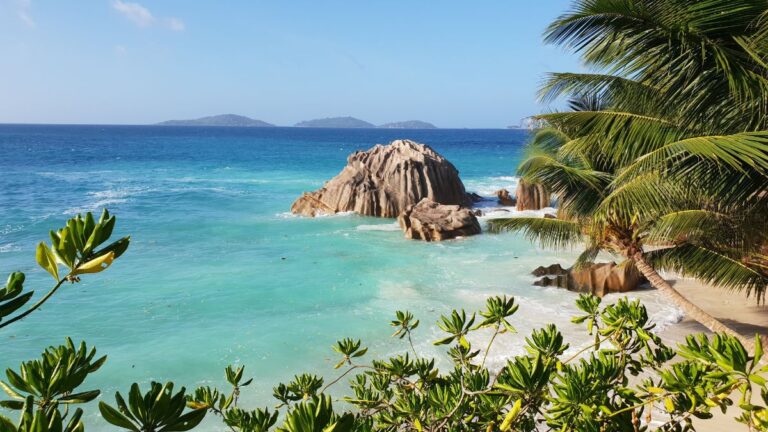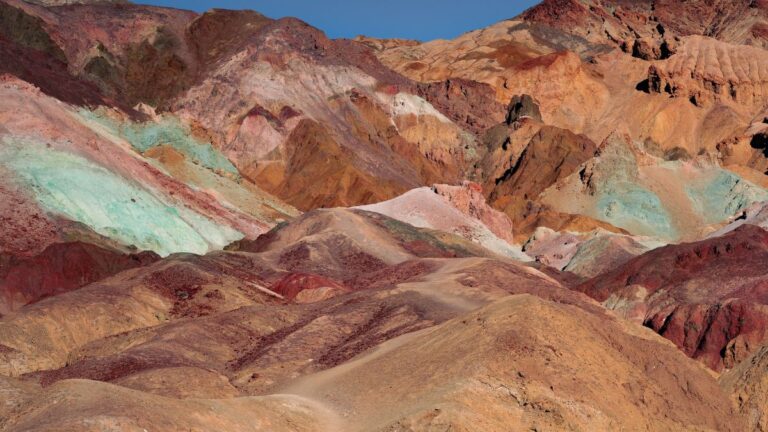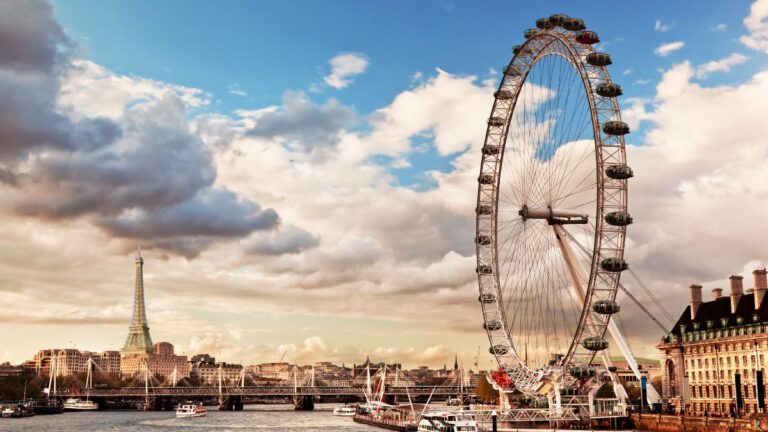Worst Time to Visit Victoria Falls: Low Water Levels and Tourist Crowds
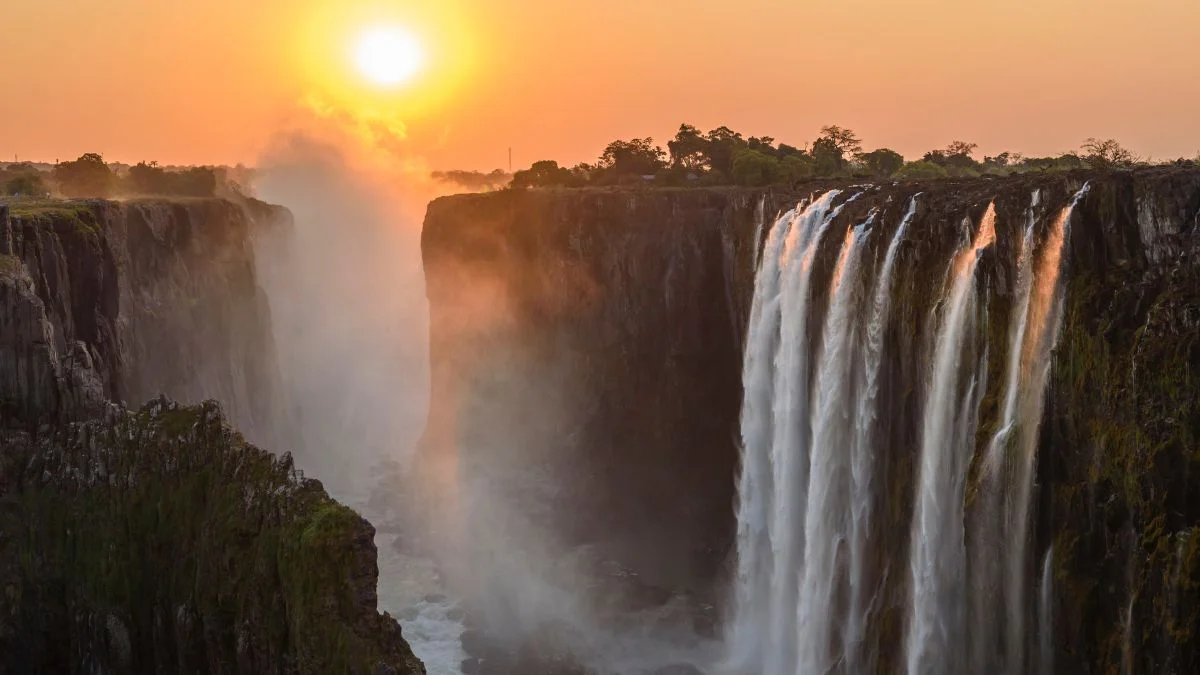
As participants in Amazon Associates and other programs, we earn from qualifying purchases. This comes at no additional cost to you. For more details, see our Affiliate Disclosure.
Victoria Falls, a spectacular cascade of nature’s raw power, is a sight to behold, with its majestic waters thundering down into the Zambezi River. However, certain times of the year can alter this once idyllic experience into one fraught with disappointment. This article delves into the factors that might hinder your visit – namely, low water levels that turn the mighty falls into a mere trickle, and dense tourist crowds that rob the sight of its tranquil beauty.
Understanding these factors will ensure you make the most of your visit to this stunning World Heritage site.
Understanding the Water Levels at Victoria Falls
Victoria Falls’ majestic roar, a testament to its sheer volume and power, is intricately tied to the seasonal ebb and flow of its water levels. Nestled on the Zambezi River between Zambia and Zimbabwe, this natural wonder witnesses drastic variations in water volume, primarily driven by the annual rainfall in the catchment area upstream.
Rainy season typically commences in late November and lasts till early April, reaching its peak in January and February. During this time, the Zambezi River swells with a deluge of rainwater, feeding the falls and causing it to reach its maximum flow rate around April or May, often producing a breathtaking spray that can be seen miles away.
Conversely, the dry season starts from April and extends till October, the water levels progressively receding during these months. Around October or November, the falls reach their lowest levels. Depending on the severity of the dry season, certain sections of the falls, particularly on the Zambian side, might reduce to a trickle or even dry up completely, showing bare cliff faces that are usually hidden under cascades of water.
While it’s the combination of both these seasons that gives Victoria Falls its dynamic character, it’s crucial for visitors to understand this cycle to plan their trip effectively, ensuring they witness the spectacle in its most awe-inspiring state.
When the Mighty Fall: The Impact of Low Water Levels
While Victoria Falls is an enduring spectacle throughout the year, the impact of low water levels during the dry season can significantly change the experience for visitors. As the waters recede, the mighty waterfall can lose some of its characteristic grandeur. The thunderous roar quietens, the cooling mist dissipates, and the expansive curtain of falling water shrinks, often revealing vast stretches of the usually concealed cliff face.
Sections of the waterfall, particularly on the Zambian side, can sometimes reduce to a mere trickle or even dry up completely. This can be disappointing for visitors expecting the full, overwhelming spectacle that Victoria Falls is known for. Instead of the grand panorama of cascading water, visitors might be met with a quieter, lesser-known face of the falls – a network of rivulets and rock faces usually hidden under the deluge.
While low water levels do offer certain advantages, like the opportunity for adventurous activities such as swimming in the Devil’s Pool or walking across parts of the waterfall’s cliff base, these experiences vastly differ from the awe-inspiring power display of the waterfall at peak flow. Understanding these changes is essential for tourists planning their trip, ensuring they align their expectations with the seasonal realities of this natural wonder.
The Influence of Seasonal Changes on Water Levels
Seasonal changes largely influence the water levels at Victoria Falls, making it a spectacle that is continuously evolving throughout the year. These changes are principally driven by the rainfall patterns in the Zambezi River’s catchment area, which feeds the waterfall.
During the rainy season, typically from late November to early April, heavy rains increase the volume of the Zambezi River dramatically. The river swells with rainwater, increasing the flow rate over the falls and generating an awe-inspiring display of nature’s power. The peak of this season, usually around March or April, witnesses Victoria Falls in its most thunderous form, the torrent of falling water often creating a magnificent spray visible from miles away.
Conversely, the dry season, which usually starts from April and extends till October, experiences a gradual decrease in the river’s volume. As the rainfall dwindles, the once roaring waterfall progressively recedes, reaching its lowest levels around October or November. Depending on the severity of the dry season, parts of the falls might even dry up entirely, particularly on the Zambian side.
It’s this seasonal oscillation that gives Victoria Falls its dynamic character. But it also means that the visitor experience can drastically differ depending on the time of year. Understanding the influence of seasonal changes on the water levels is therefore vital for tourists planning their visit, allowing them to choose the experience that aligns best with their expectations.
Tourist Crowds: When to Expect the Most Visitors
As one of the Seven Natural Wonders of the World, Victoria Falls attracts a significant number of tourists annually. However, the influx of visitors varies throughout the year, influenced by a combination of factors such as climate, holidays, and the waterfall’s seasonal dynamics.
Generally, the highest number of visitors converge on Victoria Falls during the dry season, from June to August. This period coincides with the Northern Hemisphere’s summer holidays, leading to an increased number of international tourists. Furthermore, the relatively mild weather, coupled with the chance to indulge in unique activities like the exhilarating swim in the Devil’s Pool, adds to the destination’s appeal.
Another peak in tourist activity occurs during the festive season, from mid-December to early January. Despite being the rainy season, many choose this time to visit as it aligns with global end-of-year holidays. Also, the falls are a spectacular sight during these months, as the Zambezi River begins to swell with rainwater, gradually building up the waterfall’s flow.
During the shoulder months, particularly April, May, and September, October, the crowds tend to thin out, providing a good balance between decent water levels and fewer tourists.
Understanding these patterns can help you plan your trip strategically, striking the right balance between enjoying the falls at their best and avoiding the peak tourist crowds.
How Crowds Can Impact Your Victoria Falls Experience
As with any popular tourist destination, the crowd levels at Victoria Falls can significantly influence your overall experience. While the bustling energy of fellow travelers can sometimes add to the thrill and excitement, larger crowds might also detract from the serene and tranquil ambiance that many seek when visiting such natural wonders.
Firstly, large crowds can lead to congested viewpoints. Victoria Falls has numerous stunning vantage points that allow you to admire its expansive beauty. However, during peak tourist seasons, these viewpoints can become crowded, limiting the space and time you have to soak in the views and capture perfect photographs. What should be an intimate encounter with nature could feel rushed and crowded.
Secondly, crowds can affect the availability and enjoyment of local tours and activities. Whether it’s a guided tour, a scenic helicopter flight, or the thrilling Devil’s Pool swim, high demand during peak times can result in fully booked schedules, long waiting times, or larger group sizes. This could impact the quality of your experience and potentially limit the activities you can partake in during your visit.
Lastly, the environmental impact of crowds can’t be overlooked. Increased footfall can lead to higher levels of litter and potential damage to local flora and fauna. While local authorities and organizations work hard to mitigate these impacts, the sustainability of the site is a shared responsibility between them and respectful visitors.
Therefore, considering the potential impacts of tourist crowds on your Victoria Falls experience is crucial while planning your trip, allowing you to find the right balance between popular travel times and a more personal, leisurely experience.
Tips to Avoid Peak Tourist Times at Victoria Falls
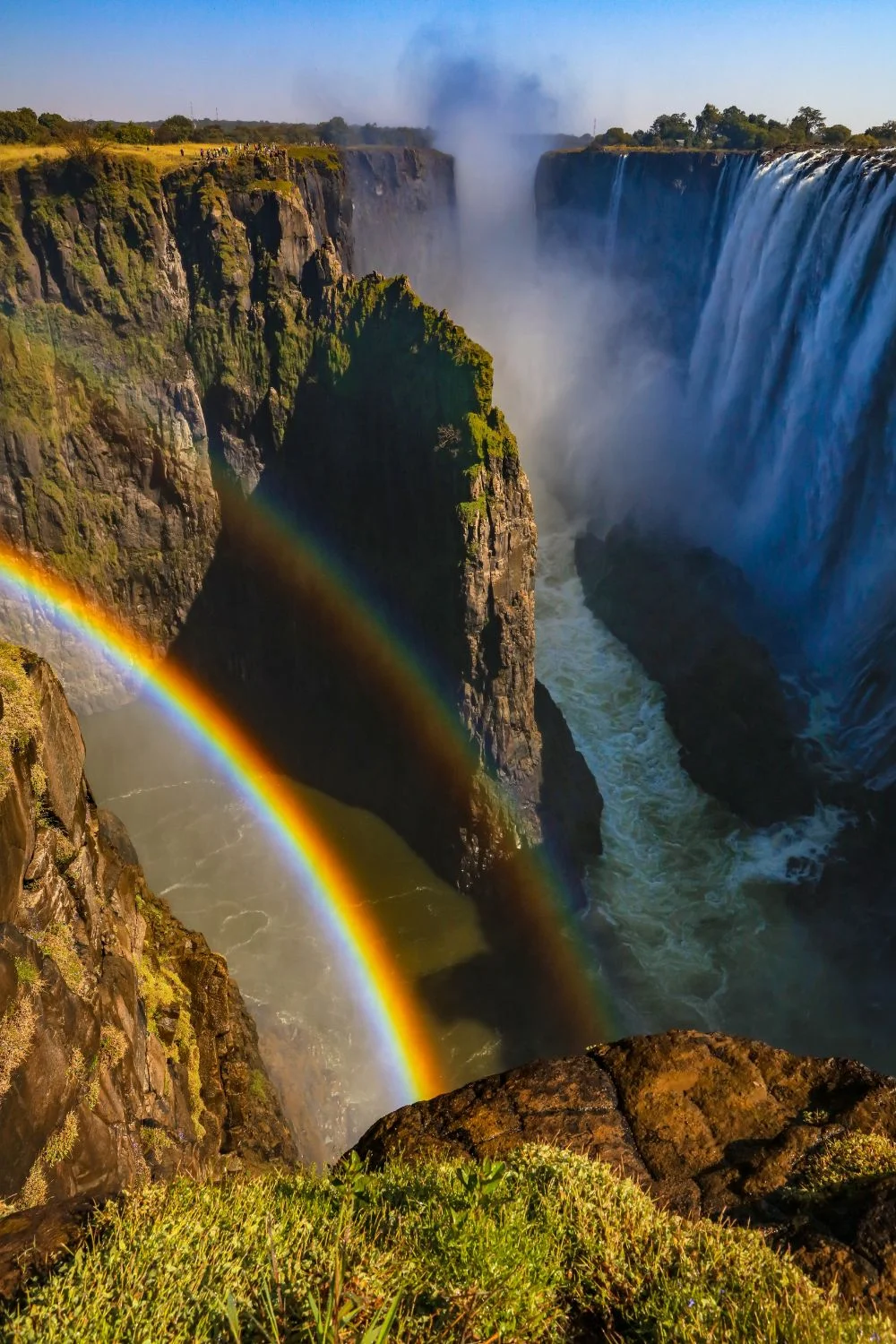
Avoiding peak tourist times at Victoria Falls can result in a more relaxed and personal experience. Here are some tips to help you plan your visit during quieter periods:
- Consider Shoulder Seasons: Planning your visit during the shoulder seasons of April-May and September-October can be a strategic move. During these periods, the weather is generally pleasant, water levels are moderate, and the tourist crowds are less dense.
- Time Your Visit Wisely: Even on busy days, early mornings and late afternoons tend to be less crowded. Many tour groups and day-trippers aim for midday visits, so getting there early or staying late can provide a more peaceful experience.
- Book in Advance: If you’re planning to partake in popular activities like guided tours, helicopter rides, or the Devil’s Pool swim, booking well in advance ensures you secure a spot, especially outside of the peak tourist times.
- Explore Lesser-Known Spots: While most visitors flock to the most famous viewpoints, there are plenty of lesser-known spots around Victoria Falls that are equally breathtaking. Research and seek out these hidden gems for a quieter experience.
- Stay Overnight: If possible, staying in a nearby town or lodge allows for greater flexibility in visiting the falls at off-peak times, such as early morning or evening.
- Be Patient and Flexible: Understand that you’re visiting a popular tourist destination and occasional crowding may be inevitable. A patient and flexible attitude will enhance your overall experience.
By considering these tips, you can better avoid peak tourist times and create a more intimate and enjoyable Victoria Falls experience.
Balancing Water Levels and Crowds for the Best Experience
Creating the optimal Victoria Falls experience involves a delicate balancing act between water levels and tourist crowds. Here are a few strategies to help you find that sweet spot:
Visit During Shoulder Seasons: The shoulder seasons – April-May and September-October – often offer a satisfying compromise. During these months, the water levels are typically substantial, providing a good spectacle, and the tourist crowds are less intense than in peak seasons.
Early Morning or Late Afternoon Visits: Visiting the falls early in the morning or late in the afternoon can help you dodge the busiest times of day. This strategy allows you to enjoy the beauty of the falls in relative tranquility, even during busier seasons.
Be Flexible with Your Dates: If possible, keep your travel dates flexible. This way, you can monitor both the predicted water levels and tourist volumes close to your travel time and choose the most favorable period.
Consider Your Preferences: Ultimately, the ‘best’ time to visit depends on personal preferences. Some visitors prefer the mighty roar and vast curtain of water during the high water season, while others might enjoy the unique activities and vistas available during the low water season. Likewise, some travelers might enjoy the energy of peak tourist times, while others prefer a quieter, more serene visit.
Consult with Local Tour Operators: Local tour operators or travel consultants have a wealth of knowledge about the falls and can provide valuable insights to help you choose the best time for your visit.
Whether you encounter Victoria Falls amidst the bustle of peak tourist season or the tranquility of a quiet morning, your experience will be unique and memorable in its own right. After all, standing before one of the world’s most impressive waterfalls is a magnificent experience, irrespective of the circumstances.
Alternate Attractions: Other Activities When the Falls Are Not at Their Best
While the mesmerizing cascade of Victoria Falls is undeniably the highlight, the surrounding region offers a plethora of alternative activities and attractions. Even when the falls are not at their best due to low water levels or overcrowding, you can indulge in numerous other experiences that are just as exciting and memorable:
- Wildlife Safaris: The region around Victoria Falls is rich in biodiversity. National parks like Mosi-oa-Tunya National Park in Zambia and Victoria Falls National Park in Zimbabwe offer exciting opportunities for wildlife safaris where you can spot elephants, zebras, giraffes, and more.
- Zambezi River Cruises: A cruise on the Zambezi River, especially at sunset, is an unforgettable experience. You can enjoy the serene beauty of the river, spot crocodiles and hippos, and witness spectacular sunsets.
- Cultural Tours: Take a cultural tour to interact with local communities, learn about their traditions, lifestyles, and arts. It’s an excellent way to understand the region beyond its natural wonders.
- Adventure Activities: For adrenaline junkies, Victoria Falls is a dream come true. Activities like white-water rafting, bungee jumping, zip-lining, and helicopter rides over the falls are available all year round.
- Walking Safaris: Another engaging way to explore the region is through walking safaris. These guided tours allow you to witness the flora, fauna, and smaller details of the ecosystem that you might miss on a traditional safari.
- Visit Livingstone Island: Situated in the middle of the Zambezi River, right on the edge of the Victoria Falls, Livingstone Island offers a unique perspective of the falls and surrounding areas.
The magic of Victoria Falls extends beyond its thundering waters. So even if your visit coincides with a time when the falls are not at their most spectacular, rest assured that there are still plenty of thrilling and enriching experiences to be had.




